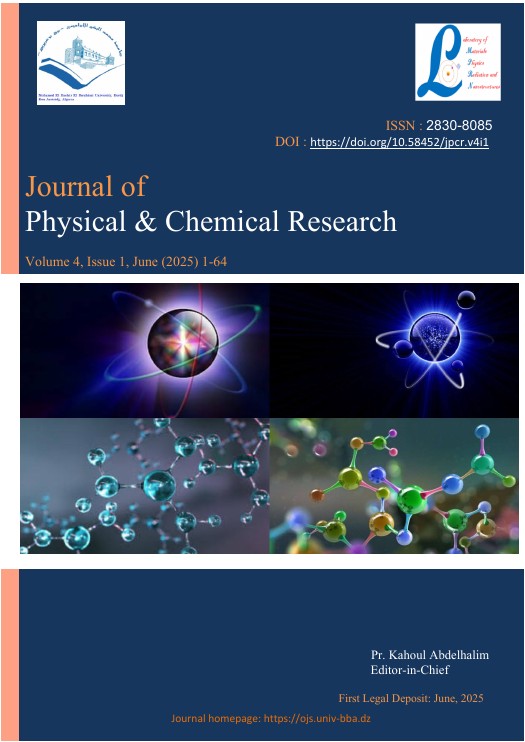Numerical Study of lead-free halide perovskites solar cells using Efficient materials as electron transport materials
DOI:
https://doi.org/10.58452/jpcr.v4i1.195Keywords:
2D materials, Solar cells, Simulation, optimizationAbstract
This work presents a comprehensive theoretical analysis aimed at finding the elements that impede the efficiency of KGeCl3 solar cells. The aim of our investigation is to examine the impact of various characteristics to enhance its performance. The improved design exceeds the baseline, attaining a JSC of 37.08 mA/cm², Voc of 0.77 V, and FF of 60.80%, therefore indicating the possibility to reach an efficiency of up to 17.57% by the strategic optimization of 2D materials as the electron transport layer (ETL). The suggested analysis facilitates the identification of relevant degradation components and creates a basis for further design optimization. showcasing the effectiveness of our approach, the findings from this study not only highlight the critical factors affecting 2D perovskite solar cell performance but also provide a foundation for future research and optimization efforts.

